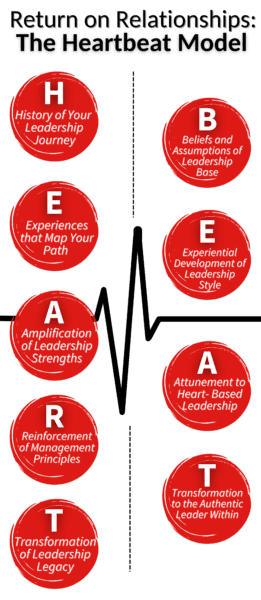The Road to Great Leadership
The greatest leaders that I have experienced in my career are the ones that are the most open to learning. They are willing to create the space for others to share who they are in a very non-threatening way. Is this skill something that comes naturally? I would say most often not. It’s a skill that has some rudimentary core elements, but most of the vital skills are developed through core awareness in the leader as an overall person. Leaders that we want to emulate appear to connect to a deeper level of their humanness. And they create the space for others to engage with them there.
The world’s great spiritual leaders talk about the fact that many leaders come from a place of ego. Generally, we are taught at an early age in the West that competition and the use of “I” are vitally important to getting ahead. And, in turn, this is what most leaders have been exposed to. However, what is important is, in fact, the opposite.
The “We” is more important as that frame allows us to look at the best interest of the entire collective. Unfortunately in todays’ hectic pace, most senior leaders are too busy to engage in this level of awareness. To demonstrate great leadership, you must understand the needs of all in your organisation which involves slowing down and using this intel as part of the overall vision.
So, What Do Great Leaders Do?
They become self-aware. And from that space, they can become cognizant of how the needs of all fit into the company’s overall strategic objectives and KPIs of their organisation.
Self-awareness oftentimes comes to leaders when they are in either personal or professional crises. It is in that space where all humans step out of their ago state and listen in order to grow.
So, I think of the leader David Price, the CEO who, on a hike, heard that his friend could not afford the increase in rent for her place in Seattle. He asked himself, “Why does this happen to people who should never have to worry about the basics? I want to make a difference.”
So, What Does the Millionaire Do?
He decided that he wanted to create change so after a bit of research he decided that he would give everyone at his company $70,000. Dave Price was aware that he wanted to make a difference in peoples’ lives, and he used this leverage to make this happen. He did not have a personal crisis, but he cared deeply about the wellbeing of others, so he took his values, which translated into taking steps to have his vision impact the people around him.
A leader of a major telecom company shared that his family business grew well above his wildest dreams. He was living the lifestyle of someone that had done well. He found that when living this lifestyle at first, he felt entitled to enjoy the fruits of his labour. But, he then went through a personal crisis where his home life fell apart. From that space of darkness, he grew a level of compassion. Through pain, this is when we sit in silence and think of how we impact others. This CEO had a lot of changes in his personal life which then rolled into his professional life.
He recognised that he was disconnected from himself as a person. This impacted his capacity to connect with the overall needs of those around him. Then, he decided that to make a difference, he would become a part of his local community, sitting on various boards and understanding the needs of those around him. Through his pain, his arrogance was humbled. This then translated to how he led his company.
It Starts With an Awareness of Self
As a leader, it is about coming into contact with oneself and what you value. Most leaders have a story of why they became a leader. What are the core values that inform your leadership? If this is an area where a leader does not have this inner knowledge, it becomes easy to come to leadership from a tactical space versus the space of a value-driven vision. When leading, ensuring that you are connected with what is important to your leadership story allows others to understand you as a person and what you value. Looking at your overall strategic objectives from the frame of what is my story and what I value makes it a lot easier to reconcile concerns when they arise.
There are several things that improve the skills of a leader to become even better. The first level is awareness of self. This is the umbrella that houses the space for one’s capacity to be aware of the needs of others. The second level is awareness of others. The third is how the first two levels align with the kind of leader that you want to be that is your leadership legacy.
Sticky Learning ® is 7 times more effective than 1-day training courses. Plus, you will get a Chain of Evidence proving your Return on Investment. Discover soft skills training that changes behaviours long term.

Book of Joy
In the Book of Joy, the author shared when interviewing Desmond Tutu and the Dalai Lama that they do not feel that they are separate and apart from the others they need. They draw their leadership from a place of a collective “We” versus “I”, which means that these spiritual leaders are constantly thinking of leading from a collective wholeness. This space enables them to think of what is in the best interest of the whole, versus the individual.

Some of the best leaders in the world appear to lead from that space. They think things through from the strategic lens of ‘what do I value?’ And, how I am ensuring that am leading from that space of alignment. Good leaders bring this space of awareness wherever they go. At times if they feel like they are veering off they spend time in stillness to ensure that they can reconcile where they are and what needs to be done to get back on course.
Benchmarking
Another skill needed for good leaders to be the best version of themselves is understanding how they benchmark currently as a leader. Without this diagnosis, it becomes difficult to understand the strengths and weaknesses of ones’ style. Understanding where you are is a good starting point so you can tailor the adjustments needed to enhance your path to authentic leadership.
Here are some quick questions to assess one’s leadership style:
There are several areas that leaders need to assess, such as communication, balanced processing, connection to others and recognition. In my new book ROR: Return on Relationship Amplify your Authentic Leadership to Create More Resilient Teams, leaders assess themselves in their various elements of leadership. A leader needs to understand how he benchmarks himself. Then with anonymous feedback from their team, they can start honing in on the areas they need to improve to become the best version of their leadership self. As leaders work through the various elements to enhance the areas of their leadership, there is an ongoing sharing of their progress. This is based on the reassessment of their skills as the leader becomes educated on what needs enhancement.
Self-Awareness

Generally, most leaders can accentuate the skill needed to enhance leadership development. However, if the leader needs more support, executive coaching may be recommended. Most leaders generally understand their areas of strength but may be a bit slower in pinpointing their blindspots. With this snapshot, leaders can create a plan to continue to fortify their strengths and work to deal with their blindspots.
In today’s society, we are all aware that awareness is needed in leaders. However, leaders are being pulled in so many directions that this concept of understanding ones’ blind spots may be a “nice to have” and not a “must-have” unless you have an aware leadership culture.
A company that is aware that its leaders need to be psychologically healthy at every level, emotionally, biologically and spiritually, can create the space for its leaders to work on themselves. When a culture realises that resilience is not just a “nice to have” but a “must-have”, those companies will make the investment needed to make their leaders the best version of themselves. In that space Return on Relationship (R.O.R) is used as the new Metric for KPI’s versus Return on Investment{R.O.I)
HEARTBEAT
Here are some of the areas that aware leaders need to explore within themselves to create the space of awareness for their ultimate leadership story. This is covered in my model of HEARTBEAT Model of Authentic Leadership.
HEARTBEAT Model
- What is the history of my leadership story? Understanding how you lead and the basic things that inform your leadership style are essential as a part of your space in uncertain times.
- What experiences in your past mapped out the type of leader you are today? These can be early childhood experiences. Or they can be inspiring leaders that impacted you on your leadership development path.
- Understanding your strengths and weaknesses as a leader creates a springboard. From this springboard you can create a learning plan to accentuate the strengths and adjust the problem areas.
- Which Leadership principles and concepts inform your present style of Leadership. What parts of these principles needs to be adhered to and which ones need to be adjusted?
- Describe your leadership legacy story. What do you want to be remembered for as a leader?
- Understanding your beliefs, values and assumptions from your internal space and how this impacts your leadership. Are you leading in alignment with this space?
- Experiential learning where you test your perfect leadership avatar. Practical exercises where role-playing and scenarios are experienced so you can reflect, learn and adapt your leadership skills repertoire.
- Heart Attunement of your Leadership. Connecting with your internal space of where your values live and becoming aware that your actions align with your day-to-day functioning as a leader.
- Continually learning and developing all the elements of your authentic leadership space. Giving them space and time on an ongoing basis to continue to implement your best leadership to those you impact.

Final Words
My model, The HEARTBEAT of Leadership, explores all these questions with leadership teams. A good leader accepts that they are continually altering and shifting. They accept that they are creating the ever-evolving space to give the best version of themselves. An aware leader is a lifelong learner that accepts that their internal space sets the stage for all they lead.




